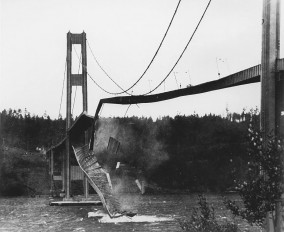
The Federal Highway Administration traveled to Pennsylvania last week to demonstrate the capabilities of their new million-dollar bridge inspection robot named RABIT (Robotic Assisted Bridge Inspection Tool). The Federal Highway Administration chose to demonstrate the robot's capability in front of members of the Pennsylvania Department of Transportation because Pennsylvania has the most structurally deficient bridges of any state in the United States. The state is also home to the oldest bridges by average and has the third most bridges of any state. The FWHA believes that RABIT will become invaluable to DOTs around the country in the near future as a way to cut down on the manpower needed to inspect bridge decks.
The FWHA recently purchased five of the robots to use as part of their Long-Term Bridge Performance Program. A joint team of researchers from the Federal Highway Administration and Rutgers University created the robot. According to the FWHA, the RABIT bridge deck assessment tool was developed to deploy a suit of nondestructive evaluation technologies simultaneously. The machine is equipped with a panoramic camera to take high-quality, 360 degree photos of the bridge deck, high-definition imaging to capture the deck surface, electrical resistivity to characterize the corrosive environment of the concrete, and impact echo and ultrasonic surface wave technology to evaluate concrete delamination. The RABITs are also capable of using ground-penetrating radar to map rebar and use GPS to record the location of testing data.
The van that transports the RABIT around the country is also able to process all of the robot’s data. The RABIT wirelessly transmits its data to computers located inside the van. Engineers inside the van can monitor the nondestructive evaluation data collection and imaging, data analysis, real-time deck condition data, and crack mapping. The FHWA believes that the machine will not only cut down on manpower, but it will also keep inspectors safer by eliminating the need for grid markers and requiring fewer lane closures.
The Long Term Bridge Performance program that the RABIT was developed for, is trying to find ways to inspect all of the country’s 600,000 bridges. After receiving funding for the project in 2008, a group of officials decided the number one priority for the program was to investigate the performance of the bridge deck. After a couple years of development, the RABIT was created. The RABIT traveled to Arlington Memorial Bridge in February 2013 to inspect the bridge’s health. The robot was able to complete the inspection in 15 hours while also minimizing lane closures. The same analysis would have taken three to four weeks if done the old fashioned way. Work is still being done to calibrate the RABITs. The robots are being used to inspect bridges in Pennsylvania, Delaware, Maryland, New Jersey, Virginia, West Virginia, and Washington D.C. The FWHA hopes the price to build each robot will decrease as more are produced.
Sources: Post-Gazette, FHWA
Want to read more like this story?

Types of bridges
Jun, 01, 2023 | EducationArch Bridge An arch bridge is a type of bridge that uses a curved, semi-circular structure, kno...

Six Injured in Brent Spence Bridge Crash
Aug, 05, 2014 | NewsSix people were injured this weekend in Cincinnati, Ohio when a car fell off the southbound deck of...

The most famous bridges of the world
Aug, 26, 2015 | NewsThere are so many bridges in the world in different styles, like old stone bridges or steely, footbr...

Historic Oregon Bridge For Sale
Aug, 15, 2014 | NewsIf anyone is in the market for purchasing an old bridge here is your chance. Multnomah county i...

Pennsylvania To Use P3 Contracts To Fix Aging Bridges
Jan, 24, 2014 | NewsPennsylvania Department of Transportation plans to replace 500 bridges in the state starting in 2015...

MDOT Completes State’s First Bridge Slide
Aug, 13, 2014 | NewsDespite taking nearly 23 hours, more than double the anticipated time to complete the slide, the Mic...

UPDATE: Tappan Zee Bridge Site Gets Own Concrete Plant
Jul, 23, 2014 | NewsWorkers began drilling piles for the Tappan Zee Bridge in March. Since then, equipment has slowly ac...

Video: Cleveland Inner Belt Bridge Demolition
Jul, 15, 2014 | NewsMany Cleveland residents were woken early on Saturday morning by the noise from the Inner Belt Bridg...

An engineering point of view for the Tacoma Narrows Bridge collapse
Apr, 04, 2023 | EducationIntroduction An iconic civil structure is a bridge. The desire for humans to go from place to...
Trending

Spectacular interchanges around the world

New Release - STAAD.Pro 2024 - 2

ADINA 2025 for Structural WorkSuite

ADINA 2025 New Release!

Concrete Buildings as Rechargeable Batteries

Powerful earthquake shakes central Philippines, dozens killed


